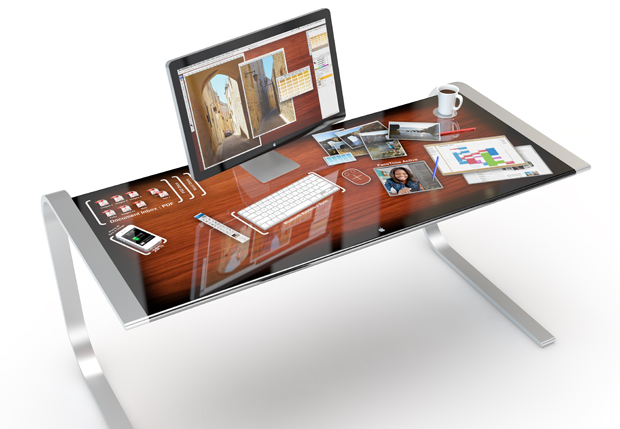
Mac|Life’s concept iDesk seems plausible and very expensive. In their concept, Mac|Life images a desk with a multitouch display and bluetooth connectivity. Phones, laptops, and other devices when placed on the desk can have their data accessed and transferred though on desk icons.
It’s a striking design, having your desk be one giant interactive flat panel display. The technology to do this certainly seems ready. Giant retina displays, and multitouch controls exist. (Well retina displays exist, scaling them up to 6 feet by 4 feet, maybe not.) The real problem seems to be more of software rather than hardware. You don’t even really need one display like that. Simply more intuitive graphical and tactile syncing with current separate displays would be nice. I imagine transferring documents from desktop or laptop computer to a tablet by touching the screen displaying the document with spread open fingertips, making a fist (think grabbing) and then touching the screen of the destination device. Of course thinking of local device storage is so 20th century. Everything is going cloud with continuous syncing.
